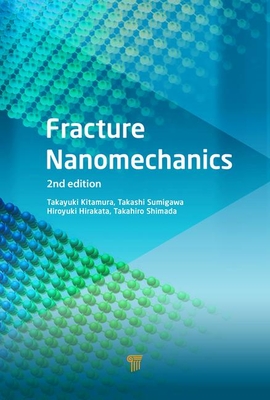You are here
Back to topFracture Nanomechanics (Hardcover)
Email for pricing and availability
Description
Materials of micro-/nanometer dimensions have aroused remarkable interest, motivated by the diverse utility of unconventional mechanical and electronic properties distinguished from the bulk counterpart and various industrial applications such as electronic/optic devices and MEMS/NEMS. The size of their elements is now, ultimately, approaching nanometer and atomic scales. Since the conventional theory of "fracture mechanics" is based on the continuum-body approximation, its applicability to the nanoscale components is questionable owing to the discreteness of atoms. Moreover, for describing the fracture behavior of atomic components, it is necessary to understand not only the mechanical parameters (e.g., stress and strain) but also the fracture criterion in the atomic scale.
This book systematically provides recent understanding of unusual fracture behaviors in nano/atomic elements (nanofilms, nanowires, etc.) and focuses on the critical initiation and propagation of interface crack and the mechanical instability criteria of atomic structures through the introduction of state-of-the-art experimental and theoretical techniques. It covers the fundamentals and the applicability of top-down (conventional fracture mechanics to nanoscale) and bottom-up (atomistic mechanics, including quantum mechanical effects) concepts. This second edition of Fracture Nanomechanics newly includes dramatic advances in unconventional fracture mechanics in nanofilms, extraordinary fatigue mechanics and mechanisms in nanometals, and a new area of multiphysics properties in nanoelements.
About the Author
Dr. Takayuki Kitamura, a professor at Kyoto University, Japan, since 1998, was with the Central Research Institute of Electric Power Industry, Japan (1979-1984), and an invited researcher at NASA (1987-1988). In 2007 he became the vice president of Kyoto University. From 2008 to 2014 he was a member of the Science Council of Japan and since 2014 is the president of the Society of Materials Science, Japan. His research interests include nanomaterial strength, multiphysics properties of nanomaterials, fracture nanomechanics on slow crack growth, and high-temperature strength of heat-resisting materials. He has won numerous awards from the Japan Society of Mechanical Engineers and the Society of Materials Science and has published around 300 papers.Dr. Takashi Sumigawa, an associate professor at Kyoto University since 2011, was a researcher at the Mechanical Engineering Research Laboratory, Hitachi Ltd. (2002-2005); a research associate at the Department of Intelligent Machinery and Systems, Kyushu University (2005); a research fellow at the Centers of Excellence, Department of Material Engineering and Science, Kyoto University (2006-2007); and a lecturer at Kyoto University (2007-2010). He won the JSME Young Engineers Award in 2005 and the JSME Medal for Outstanding Paper in 2011. His research interests are in nanomaterial strength and fatigue behavior.Dr. Hiroyuki Hirakata is an associate professor at Osaka University, Japan, since 2007. From 2003 to 2007, he was a research associate at Kyoto University. He won the JSME Medal for Outstanding Paper in 2004, the JSMS Award for Scientific Papers in 2007, and the JSMS Award for Promising Researchers in 2010. His research interests are in the strength and fracture mechanics of nano-/micromaterials.Dr. Takahiro Shimada is an assistant professor at Kyoto University since 2008. He won the JSME Medal for Outstanding Paper in 2012, the JSME Young Engineers Award in 2013, and the Young Scientists' Prize (Commendation for Science and Technology by the Minister of Education) in 2014. His research interests are in the strength and multiphysics properties of nanostructures.
